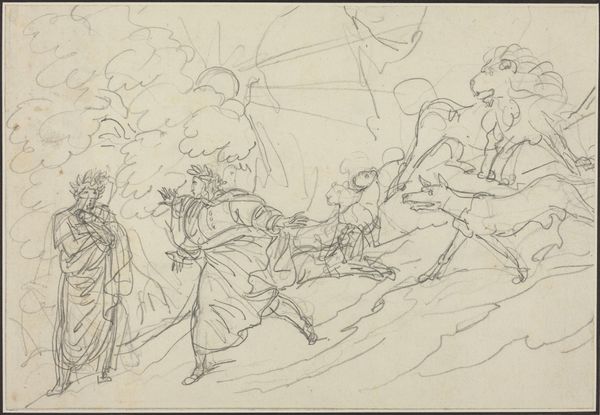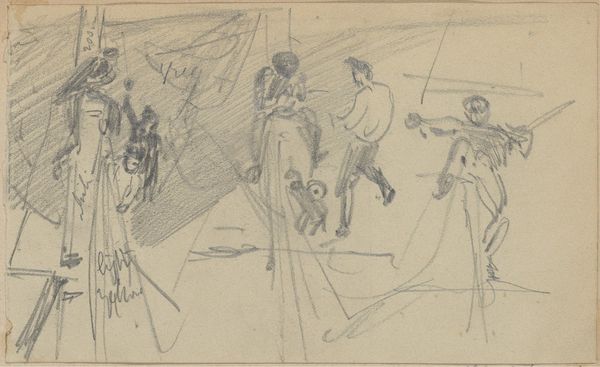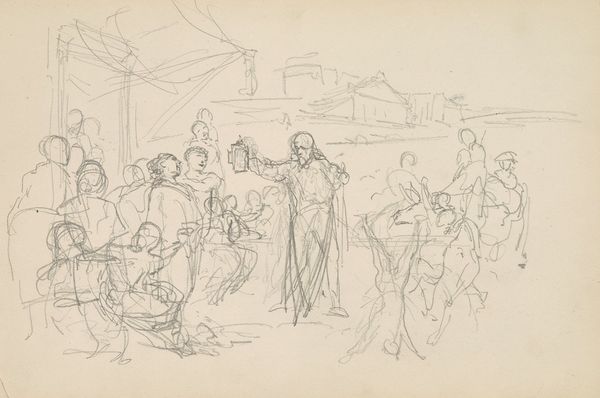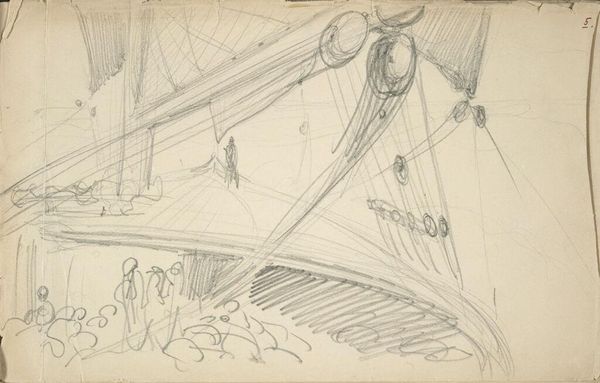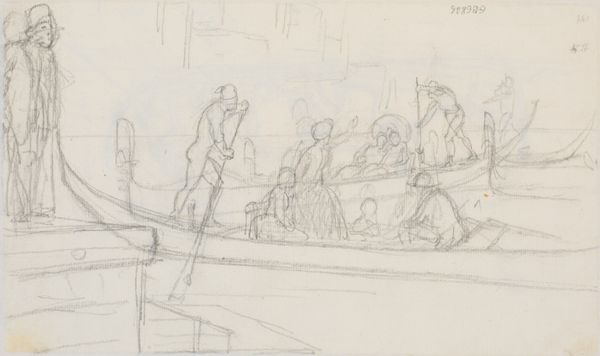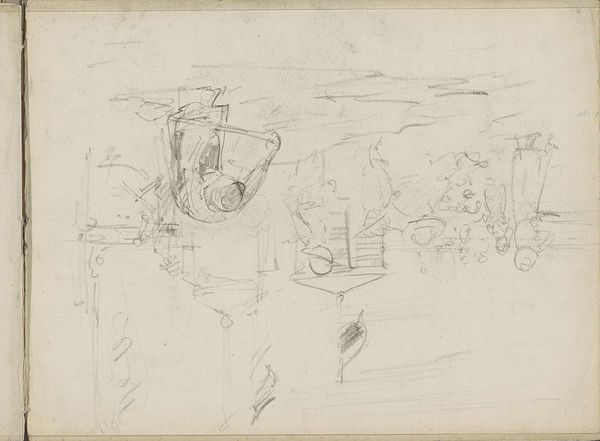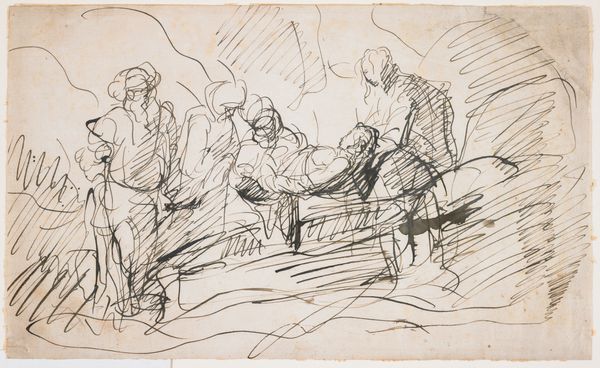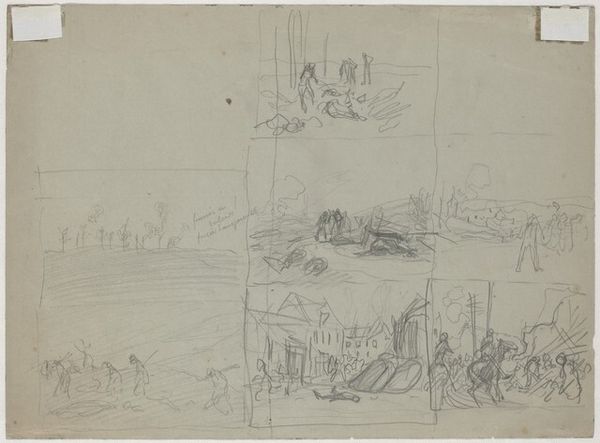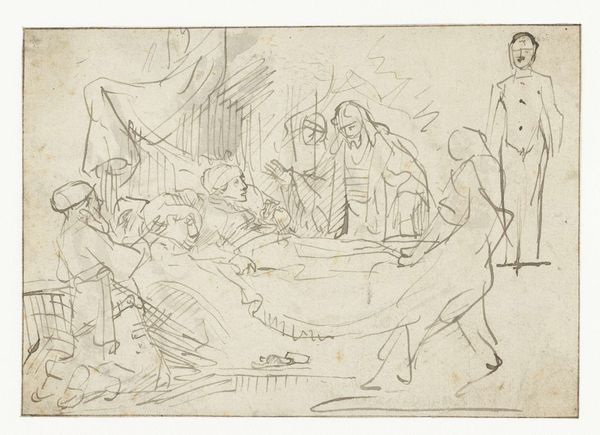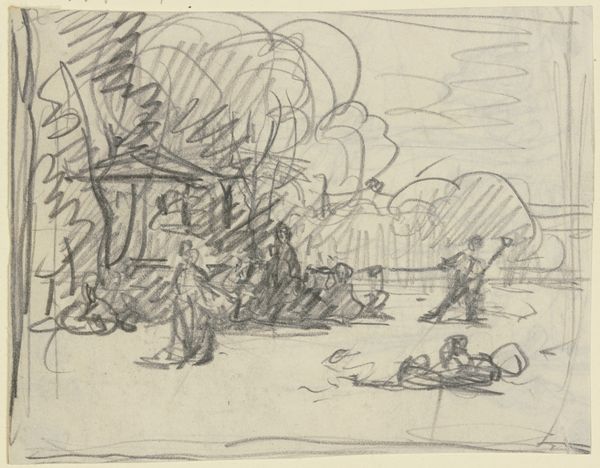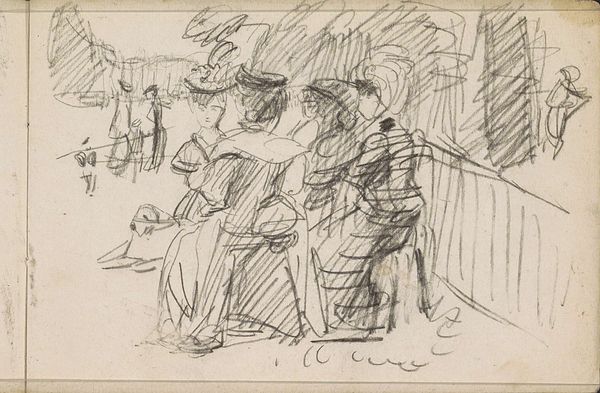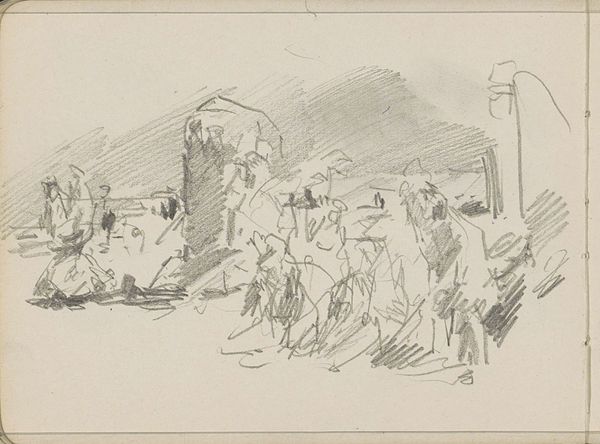
drawing, pencil
#
portrait
#
drawing
#
pencil
#
academic-art
#
realism
Copyright: Public Domain: Artvee
Curator: Right, let’s dive in. We’re looking at a pencil drawing, titled "Sailors on Sloping Deck" from 1876 by John Singer Sargent. It captures a scene on what is presumably a very choppy sea. Editor: My first impression? There's a controlled chaos here that really resonates. The tilted perspective throws you off balance, almost mirroring the unsteady footing of those sailors. You can practically feel the spray. Curator: Precisely. The diagonal composition is key; it enhances the sense of precariousness and imminent action. These figures, blurred in sketch, evoke a feeling, that anyone might get lost or injured if something would fail. Editor: There's a timeless quality too. Sailors battling the elements - it’s a tale as old as… well, ships. They almost become archetypes, these guys— embodiments of human struggle against a relentless, overwhelming force. Curator: Indeed. Consider the iconographic significance of the sea itself – a symbol of the subconscious, the chaotic, the feminine principle, perhaps. The ship, in turn, can be seen as a representation of conscious intent. And those masts like some of the weapons, spears of ancient mariners. Editor: You know, thinking of those symbols… it’s as if Sargent captured the moment when intention and chaos collide. Those figures appear, by their placement on the "sloping deck," to have surrendered the rational navigation of the sea; but now rely solely on experience. Curator: The drawing style amplifies that beautifully. See how Sargent uses a limited number of distinct, contour lines, rather than shading to suggest forms. This economy of strokes brings this moment to a place where imagination lives. We might imagine a story from almost nothing at all. Editor: Right. I also keep getting drawn back to the expressions— or lack thereof. They're just sketches, suggestions of faces, forcing us to project our own understanding of such ordeals, such fears… It becomes deeply personal that way, somehow. It is about you. Curator: Absolutely, and it emphasizes the shared, universal nature of their experience. Their individuality is secondary; the primary concern is their collective task and reliance on one another. Theirs is the job of keeping order when all hell threatens. Editor: It strikes me how effectively Sargent communicates all this with such apparent simplicity. Looking closely makes you understand the deeper symbolism, almost beyond words. What a dance of darkness and light it has revealed to us. Curator: A fleeting sketch with some powerful emotional currents indeed, suggesting much more than meets the eye at first glance, the work truly transcends its medium, bringing together all manner of experience under duress. Thank you.
Comments
No comments
Be the first to comment and join the conversation on the ultimate creative platform.

